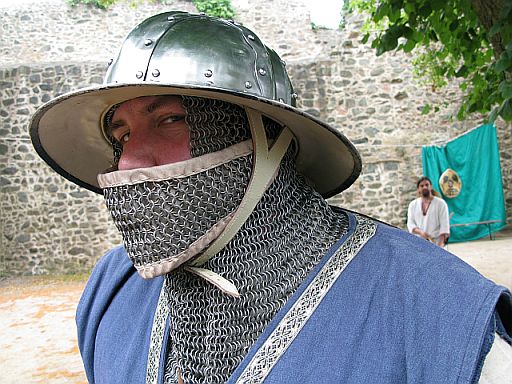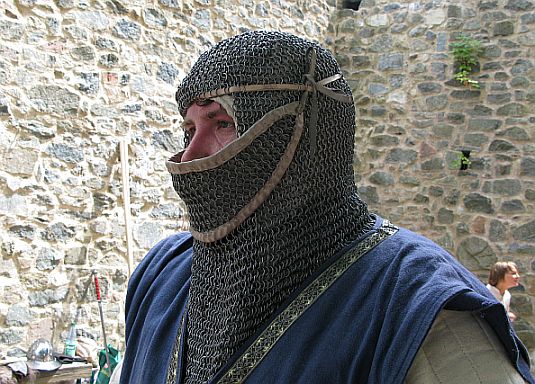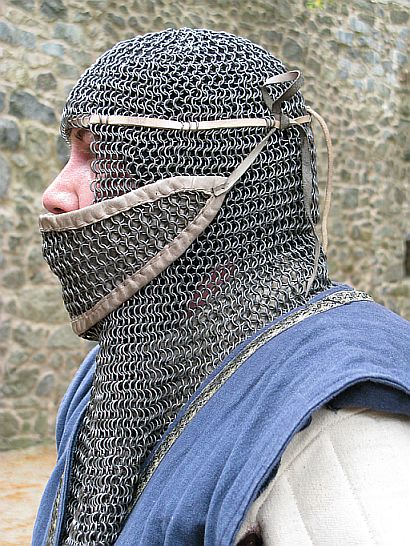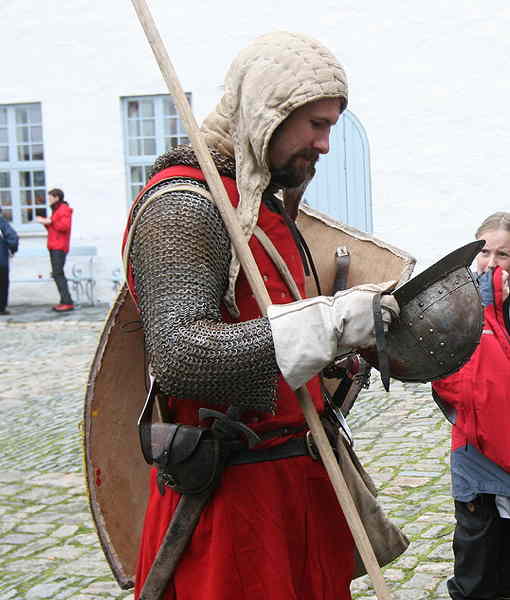a loop, put it under the leatherstrap and fasten it with a knot. If you pull strong enaught at the ventail, the loop gives in and it comes lose. It's like a quickrelease button. ;)
So now to the pictures. I have two padded caps, well in fact only one is really thick padded. I use the thicker one without the helmet, the thinner one, if I go with helmet. It's a matter of thickness and available helmet-space, you know.
You can also alternate the fixing points for a more comfortable wearing - as shown in the pictures. I found out, that it's much more comfortable to wear it less tight. If you wear it too tight, you'll get problems to breathe and speak. Also I advice to knot it in a way, that there is not too much of the ventail-strap left, so it won't be cut through during combat.
@Elling: Do you have any notes on how such a standing collar could be constructed? That is one of the items, I plan to add to my kit soon. But I don't have a clue how to make it. My first idea was to get a wide strap of thick leather and padd it on the inside with 2 -3 cm wool and linen. Then add some sort of knobs on the outside and dye it with leather dye (as seen in the Morgan Bible). What do you think?
Nevertheless, I hope my pictures can be of assistence,
Yours, Thomas

In this picture, I used a thinner woolen cap with helmet.

The coif with the thick padded cap.

The coif from the side, with ventail, fastened by a loop.
